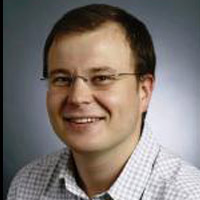Dmitri V. Talapin
Department of Chemistry and James Franck Institute
University of Chicago
“Nanocrystal Assemblies: A Modular Approach to Materials Design”
4:10 PM, 134 Featheringill Hall
Refreshments served at 3:45
Abstract: Development of synthetic methods for nanomaterials has introduced new approaches for engineering functional solids. Nanocrystal assemblies provide a powerful platform for designing two- and three-dimensional solids with tailored electronic, magnetic, optical and catalytic properties. Unlike atomic and molecular crystals where atoms, lattice geometry, and interatomic distances are fixed entities, the arrays of nanocrystals represent solids made of “designer atoms” with potential for continuous tuning their physical and chemical properties.
The assembly of functional materials from nanoscale building blocks combines advantages of crystalline inorganic semiconductors with inexpensive solution-based device fabrication. Along these lines, colloidal semiconductor quantum dots are explored as the functional elements in printable electronics, light emitting devices, photodetectors and solar cells. All these applications rely on efficient charge transport between nanocrystals. In the recent years significant progress has been achieved in understanding nanocrystal surface chemistry and its relation to the electronic properties of the nanocrystal-bases materials. I will review these developments and discuss recent results on inorganic ligands for colloidal nanomaterials. By using optimized surface chemistries we prepared nanocrystal solids exhibiting carrier mobilities comparable to those in single crystal semiconductors. I will demonstrate the power of “modular” materials fabrication for electronic, thermoelectric and photovoltaic devices.
